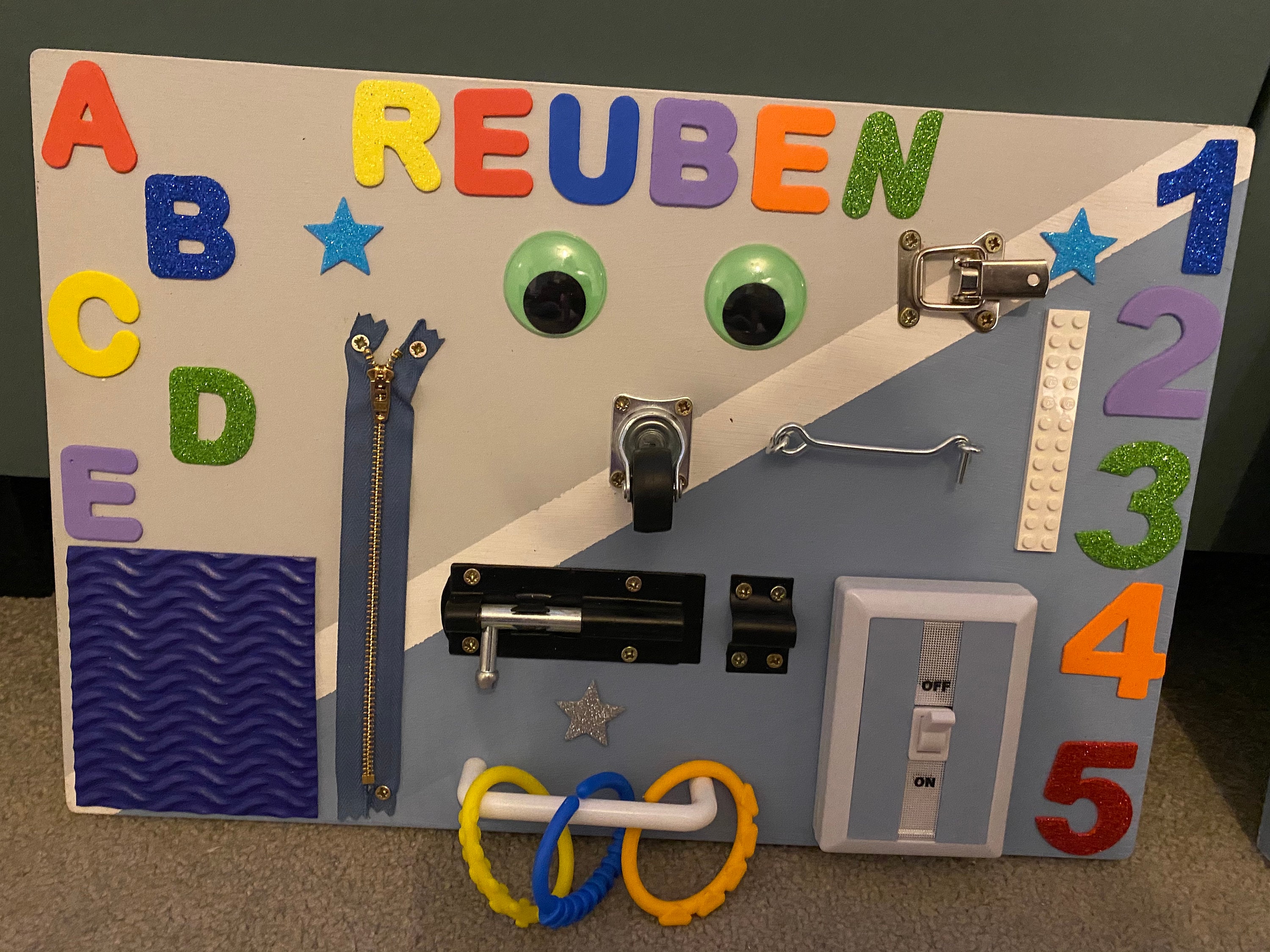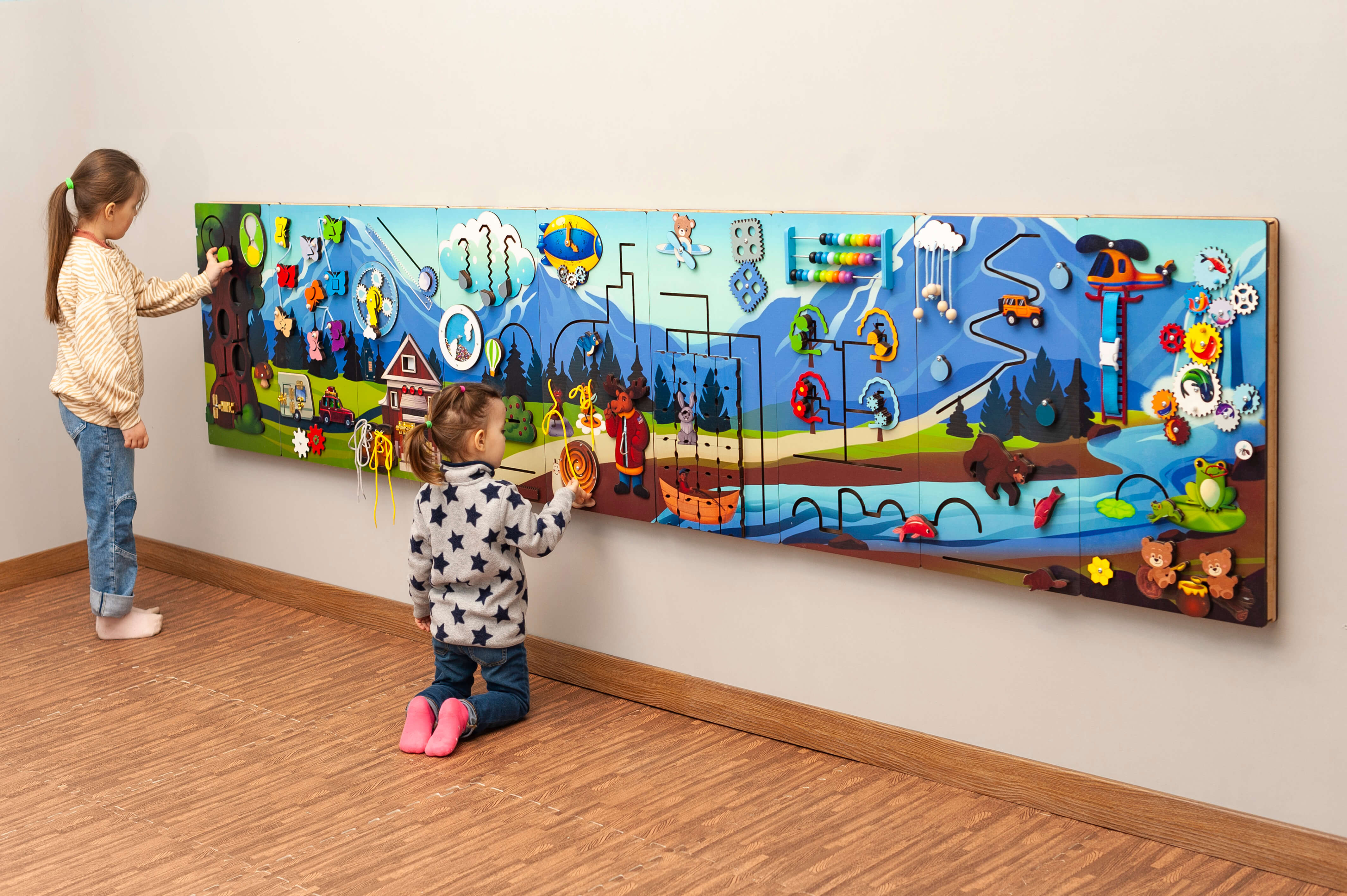Blog
Find Creative Themes for Sensory Activity Boards
Creating a sensory activity board is a fantastic way to engage children in hands-on learning experiences that stimulate their senses. These boards can be tailored to suit various themes, making them both educational and enjoyable. Sensory activity boards can be simple or complex, consisting of textures, colors, sounds, and even scents that capture a child’s imagination while enhancing their cognitive development. In this article, we will explore several creative themes you can use to design your own sensory activity board.

Nature-Inspired Themes
Nature provides a rich tapestry of ideas for sensory activity boards. By capturing the beauty and complexity of the outdoors, children’s engagement with nature can be enhanced through tactile and visual experiences.
Exploring Textures from Nature
One of the most striking features of nature is its diverse textures. Consider incorporating materials such as leaves, pine cones, bark, and stones into your sensory activity board. Each element brings unique sensations that encourage exploration.
Leaves can provide a crinkly sound and a variety of shapes, while pine cones offer a sturdy yet rough texture. Children can learn about different species of trees by feeling the textures of different types of leaves and identifying their characteristics. This encourages not only sensory exploration but also scientific conversations about botany and ecology.
Additionally, you can introduce dried flowers or herbs, which add aromatic elements to the sensory experience. The combination of scents and textures allows children to develop descriptive language skills, as they learn to articulate what they feel and smell.

Colors of the Seasons
Another aspect to consider when creating a nature-inspired sensory activity board is the use of seasonal colors. You can design sections that represent spring, summer, autumn, and winter, using color-coded materials found in nature.
For instance, spring could feature pastel colors with soft petals, while summer might include bright greens and sunny yellows with sandpaper textures that mimic beaches. Autumn’s section could showcase vibrant reds, oranges, and browns with dried leaves, and winter might incorporate white cotton balls representing snow.
This thematic representation not only cultivates an appreciation for the natural world but also fosters discussions about seasonal changes and cycles. It also enables children to express creativity by associating colors with seasons, enhancing their understanding of the environment around them.
Soundscapes of the Outdoors
In addition to textures and colors, brainstorm how to integrate sound elements into your nature-themed sensory activity board. Sounds of rustling leaves, chirping birds, or trickling water can all be represented through various mechanisms.
You can create small sound boxes filled with items like rice or beans that mimic the sound of rain or wind. Alternatively, you can find recordings of nature sounds to play alongside the board. This multi-sensory approach immerses children in the outdoors, fostering a sense of connection with nature while developing their auditory processing skills.
>>>Read more: Unlock Your Child’s Motor Skills with a Fun Montessori Activity: Marbles and Tongs
Underwater Adventure Themes
An underwater adventure theme opens up a whole new world of creativity for sensory activity boards. The diverse marine life and vibrant ecosystems provide a plethora of engaging elements.

Textured Ocean Life
Start by introducing various ocean-inspired materials that represent different sea creatures. For example, use sponges for jellyfish, smooth stones for starfish, and soft fabrics for fish. Layering these textures will allow children to discover the uniqueness of each creature and encourage imaginative play.
You could also incorporate bubble wrap to simulate the sensation of swimming through water. As children press on the bubbles, they will experience a delightful popping sound, which adds an auditory layer to the tactile experience.
By focusing on the textures of the ocean, children can create narratives around their favorite sea animals, fostering creativity and storytelling abilities while simultaneously engaging their senses.
Colorful Coral Reefs
A crucial component of underwater adventures is the mesmerizing colors of coral reefs. Create a section of your sensory activity board dedicated to this vibrant ecosystem using colorful felt pieces, painted cardboard, or even recycled plastic to represent corals.
Introduce different shades of blues and greens to mimic the ocean depths while adding splashes of pinks, purples, and oranges to represent the coral itself. This section can serve as a lesson on biodiversity, teaching children about the importance of preserving our oceans and their inhabitants.
Encouraging discussions about the colors and shapes of different types of coral can enhance children’s awareness of marine biology. This not only enriches their vocabulary but promotes environmental stewardship at a young age.
Sounds of the Sea
Finally, sound plays a significant role in bringing the underwater theme to life. While children explore the textures and colors of the ocean, consider integrating sound-making components like seashells, bells, or even electronic sound devices that mimic waves crashing or whales singing.
The auditory elements help create an immersive experience, inviting children to close their eyes and envision themselves under the sea. It enhances cognitive engagement as they begin to associate specific sounds with particular sea environments.
Space Exploration Themes
The vastness of space offers endless inspiration for creating a sensory activity board. The mysterious planets, glittering stars, and cosmic phenomena can transport children to a galaxy far away.

Textures of Space
Begin by introducing various materials that represent celestial bodies. Use foil or metallic fabric to symbolize stars, rough textures for asteroids, and smooth surfaces for planets. Children can touch and feel the differences while learning about the formation and composition of these galactic objects.
Incorporating glow-in-the-dark paint or stickers can also spark excitement as children watch their board illuminate in low light. This could lead to discussions about day and night, and how celestial bodies are perceived differently based on time and location.
Cosmic Colors
Colors are essential in portraying the wonders of space. Encourage creativity by utilizing deep blues and blacks to represent the universe, while vivid colors can depict planets like red for Mars, green for Earth, and yellow for Jupiter.
By having children participate in painting or arranging colors, they can express their interpretations of space. This prompts discussions about the differences between planets, stars, and galaxies, enhancing their knowledge of the solar system. Combining art with science makes learning fun and engaging.
Sounds of the Universe
To further enhance the space theme, think about incorporating sound elements that mimic the cosmos. Sounds of rocket launches, satellite beeps, or ambient noises of outer space can provide an auditory backdrop to the sensory experience.
These sounds can be played quietly in the background during exploration or used as prompts for children to imagine their own space adventures. Integrating auditory components helps reinforce their understanding of space in a playful and imaginative way.
Artistic Expression Themes
Artistic expression is vital for children’s development, as it encourages creativity, emotional understanding, and cognitive growth. A sensory activity board centered around art engages multiple senses and nurtures individual expression.

Tactile Art Supplies
Starting with tactile art supplies, gather materials that children can manipulate and explore. Use textured paper, sponges, brushes, and even everyday objects like forks or spoons for print-making.
Children can enjoy exploring the feel of different materials while creating art. This hands-on approach allows them to experiment and take risks, fostering artistic confidence. Incorporate a variety of mediums such as clay, paint, and fabric to inspire messy, open-ended play.
Color Exploration
Color is a universal language that connects people and emotions. Create a section of your sensory activity board dedicated to color exploration through color mixing activities, where children can combine primary colors to discover secondary colors.
Provide safe, washable paints in various containers and encourage children to mix and match. Through this process, they will learn about color theory while developing fine motor skills and hand-eye coordination. Discussing their color choices can promote critical thinking and self-expression.
Soundtrack of Creativity
Enhance the artistic experience with a carefully curated soundtrack that stimulates creativity. Music has a profound effect on mood and emotion; therefore, select songs that evoke different feelings or complement the creative process.
Consider providing instruments like tambourines or maracas for children to create their own rhythms while working on their artwork. Engaging with sound during artistic expression fosters a multi-sensory environment that inspires deeper connections to their creations.
Conclusion
Creating a sensory activity board is an incredibly enriching experience for both children and caregivers. By exploring various themes, from nature to space to artistic expression, you can provide children with opportunities to engage their senses and foster cognitive development. Each theme offers unique textures, colors, and sounds that encourage exploration and discussion, ultimately enhancing the learning experience.
Remember that sensory activity boards should be adaptable to suit children’s interests and developmental stages. Let creativity guide you, and feel free to mix and match elements from different themes to develop a board that resonates with your child’s personality. Embrace the journey of discovery, and watch as your child’s imagination flourishes through the wonder of sensory play!
